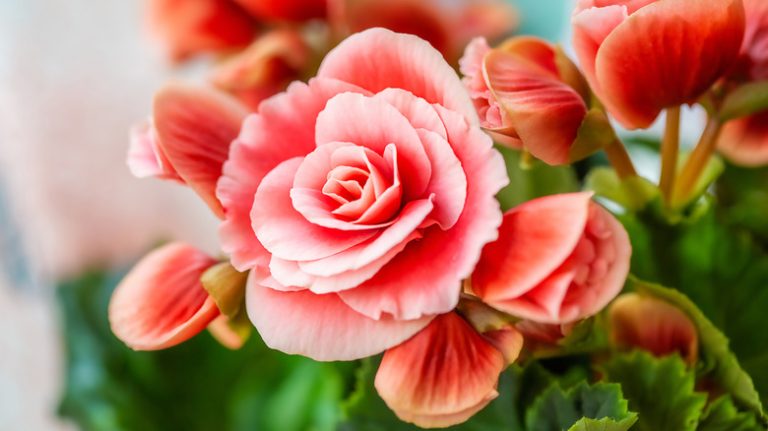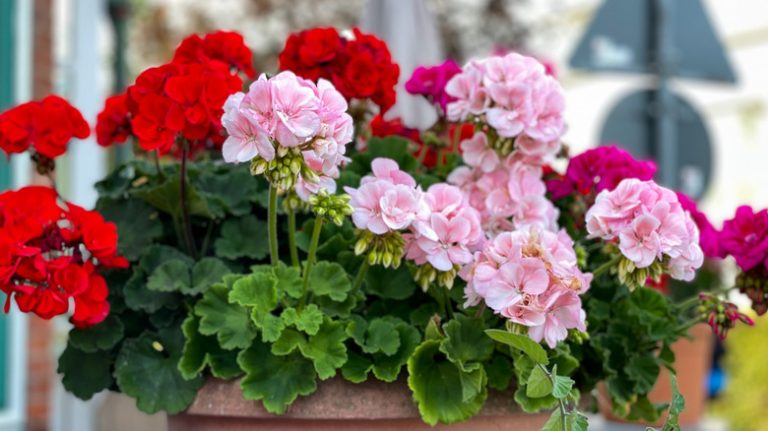Up until early 2024, Fuchsia boliviana alba was considered a well-kept secret in the world of horticulture. This stunning white-flowered form of the Bolivian Fuchsia, originally discovered by Ernest Wilson in 1895, was rarely seen or grown. But thanks to the efforts of a few dedicated gardeners, this beautiful fuchsia has now become more widely available.
Sowing Fuchsia boliviana alba from seed takes a bit of patience, as the germination period can be quite long. However, the reward is well worth the wait. To start, it’s best to sow the seeds in early spring. Place the seeds on a windowsill or other warm, well-lit location, and let them germinate. Fuchsia seeds usually germinate within 4 to 8 weeks, but it can sometimes take even longer.
When it comes to fuchsia breeding, pollination can be a bit tricky. Fuchsias are known for their complex flowers and the need for specialized pollinators. However, with Fuchsia boliviana alba, the process is relatively simple. The flowers are usually self-pollinating, meaning they can fertilize themselves without the need for another fuchsia plant.
Once the seeds have germinated, the young fuchsia plants can be grown indoors or transplanted to a separate pot. It’s important to provide them with enough light to promote healthy growth. Fuchsia boliviana alba plants prefer bright, indirect light, so placing them near a sunny window is a good idea.
Within a few months of planting the seeds, the fuchsia plants should start to produce small fruits. These fruits, known as berries, contain the seeds of the Fuchsia boliviana alba. The berries are usually pale green or white and have a sweet, juicy pulp. When they are fully ripe, they can be harvested and the seeds can be collected for future sowing.
Most gardeners think that growing fuchsias from seed is a complicated process, but Fuchsia boliviana alba proves them wrong. With a bit of patience and care, anyone can enjoy the beauty of this rare and stunning white bolivian fuchsia in their own garden.
So if you’re looking to add something unique and exotic to your garden, why not give Fuchsia boliviana alba a try? It’s a plant that is sure to impress with its lovely white flowers and vibrant green foliage. Happy gardening!
Fuchsia Seeds
Fuchsias are beautiful flowering plants that can be grown from seeds. The seeds are found in the pulp inside the fruits of the fuchsia plant. To separate the seeds from the pulp, you should let the fruits ripen until they are soft. This usually takes place within 2 to 3 months from pollination, which often happens in March. Once the fruits are ripe, you can separate the seeds from the flesh.
Fuchsia seeds are small and can be quite variable in size. They may be dark or light in color, depending on the variety. To ensure germination, it is best to sow the seeds as soon as possible after collecting them. You can either sow them directly in the garden or start them indoors. If you choose to start them indoors, they should be sown in a seed-starting mix and placed in a warm, well-lit area, such as a windowsill.
When sowing fuchsia seeds, some gardeners prefer to nick or soak them in warm water to help with germination. Others think that it is best to sow the seeds without any treatment. It’s up to you to decide which method works best for you.
It’s important to note that fuchsia seeds can sometimes take a while to germinate. Some may sprout within a few weeks, while others may take several months. The germination process can also be a bit tight, as the seeds have a hard outer coating that needs to be broken. So be patient and give the seeds some time.
Once the seeds germinate, the fuchsia plants can be grown and cared for in the same way as other fuchsia varieties. They will eventually produce beautiful flowering stems, bringing color and life to your garden.
If you are interested in growing Fuchsia boliviana alba, also known as White Bolivian Fuchsia, from seeds, you can find them available for sale from various seed suppliers. Suttons Seeds, for example, offers Fuchsia boliviana alba seeds for purchase. So if you want to add this unique and lovely fuchsia variety to your garden, why not give it a try?
In conclusion, fuchsia seeds are a great way to propagate these beautiful flowering plants. With some patience and care, you can grow your own fuchsia plants from seeds and enjoy their vibrant colors in your garden.
Fuchsia boliviana alba White Bolivian Fuchsia
The Fuchsia boliviana alba, also known as White Bolivian Fuchsia, is a beautiful flowering plant that produces white and light pink flowers. Originating from Bolivia, this fuchsia variety thrives in sunny and warm conditions.
The blooming period for this plant usually occurs in the spring and early summer months, starting from March. The flowers are very attractive and can be seen in gardens or even as potted plants on windowsills. Sometimes, when the conditions are right, the fruit can ripen indoors. The fruit pulp is usually juicy and sweet.
When it comes to seed-starting, Fuchsia boliviana alba can be sown from seeds collected from ripe berries. The seeds are very small and should be placed on a well-draining seed-starting mix. It takes some time for the seeds to germinate, and sometimes they may take weeks or even months. However, with the right conditions and a little patience, the seeds will eventually sprout and grow.
Fuchsia boliviana alba is a variable plant with different characteristics. It is usually grown for its attractive flowers and foliage, which can add a pop of color to any garden or windowsill. The plant prefers to be placed in a warm and sunny spot, having some protection from dry winds and frost.
When it comes to pollination, Fuchsia boliviana alba can be pollinated by insects or by another fuchsia plant. The berries produced by the plant contain numerous seeds and can be harvested once they are ripe. The pulp of the fruit is well-suited for seed collection and can be a source of viable seeds for further propagation.
In conclusion, Fuchsia boliviana alba, or White Bolivian Fuchsia, is a beautiful and versatile plant that can be a great addition to any garden or windowsill. With its attractive flowers and easy seed collection, this fuchsia variety is a popular choice among gardening enthusiasts.
Sowing Fuchsia Seeds
When it comes to sowing fuchsia seeds, it is important to first separate them from the fruit. Fuchsia boliviana alba, also known as White Bolivian Fuchsia, is a popular variety to grow. The seeds can be collected from the ripe fruit, which is usually seen in the early months of the year.
To separate the seeds, slice open the fruit and gently scoop out the pulp and seeds. You can use a spoon or your fingers for this task. Make sure to have a clean and dry container to place the seeds in.
Once you have collected the seeds, it is best to let them dry for a few days to ensure that they are fully mature before sowing. The seeds can be stored in a cool and dry place until you are ready to sow them.
For optimal germination, sow the fuchsia seeds in a seed-starting tray or individual pots filled with well-draining soil. It is recommended to sow the seeds in March, as this is a good time for warm and sunny growing conditions.
Place the seeds on the soil surface, in a separate hole, and cover them lightly with soil. Fuchsia seeds are very small, so make sure to handle them carefully and not bury them too deep. Keeping the soil slightly moist is important for germination, but be careful not to overwater as this can cause the seeds to rot.
It is worth mentioning that Fuchsia boliviana alba is a variable species, meaning that the offspring from these seeds may not all resemble the parent plant. However, this variability can also lead to interesting and unique flowering characteristics.
In conclusion, sowing Fuchsia boliviana alba seeds can be a rewarding process. With proper care and attention, you can grow your own beautiful White Bolivian Fuchsia plants from seeds.
Source: Gardening Know How
When To Sow Fuchsia
Sowing fuchsia seeds can be done during the summer months, typically in late spring or early summer. Fuchsia seeds are small and have a pulpy texture. They require warm temperatures to germinate and can take up to 4 weeks to germinate.
In horticulture, fuchsia seeds are often grown indoors on a windowsill or in a seed-starting tray. The seeds are usually separated from the pulp and then placed on a moist medium. They require light to germinate and should be kept in a warm and bright location.
Fuchsia boliviana alba, also known as White Bolivian Fuchsia, is a white flowering fuchsia. It takes around 1-4 years for the fuchsia plant to start flowering from seed. The plant produces berries that have a pale flesh and are sometimes sold as an ornamental fruit.
When growing Fuchsia boliviana alba, it is better to have more than one plant for better pollination. Fuchsia plants can be grown in separate pots or in the garden. The stems of the fuchsia plant are delicate and can break easily, so care should be taken when handling them.
Another popular fuchsia variety is Fuchsia fulgens, which has bright red flowers. This variety is sometimes called “Google Fuchsia” due to its vibrant colors. Fuchsia fulgens is a very popular variety and has been introduced through selective breeding.
Suttons Seeds is a well-known company that sells fuchsia seeds. They offer a variety of fuchsia seeds, including White Bolivian Fuchsia (Fuchsia boliviana alba), Fuchsia fulgens, and many others. Fuchsia seeds can be collected from ripe fruits or purchased from reputable gardening suppliers.
It is important to note that fuchsia seeds can have variable germination rates and may require specific conditions to germinate successfully. The germination process can be slow and challenging, but with patience and proper care, beautiful fuchsia plants can be grown.
1 Collect Your Seeds
To start growing Fuchsia boliviana alba, you will need to collect the seeds. Here’s how you can do it:
- Separate the fruit from the berries.
- Remove the pulp from the seeds.
- Place the seeds in a container (you can use a small pot) and keep them in a warm and tight place.
- When the seeds are dry, you can sow them in your garden or in a seed-starting system.
It is important to note that Fuchsia boliviana alba seeds are usually white and smaller than Fuchsia fulgens seeds. Also, the germination process can be quite challenging, so it’s best to sow multiple seeds to increase your chances of success.
Fuchsia boliviana alba is a variable plant that has been grown for many years by gardening enthusiasts. It is known for its beautiful white flowers and early blooming. The plant can thrive in different conditions, but it prefers well-drained soil and partial shade.
If you don’t have access to fresh seeds, you can try finding them from an online source or from other gardeners who have already grown Fuchsia boliviana alba. Some commercial seed suppliers might also have Fuchsia boliviana alba seeds for sale. Just remember that the seed quality and viability can vary, so it’s best to choose a reputable supplier.




